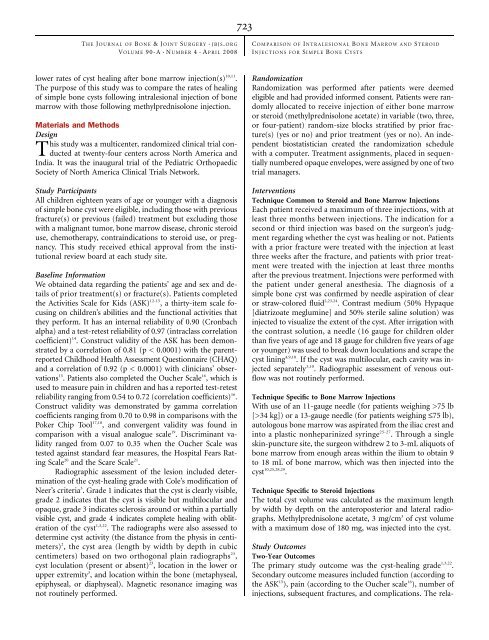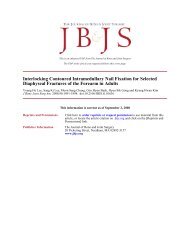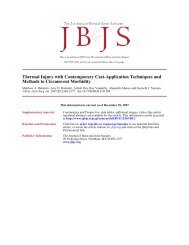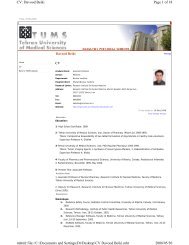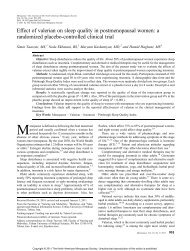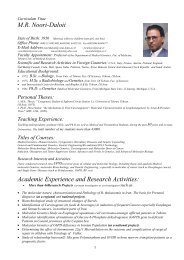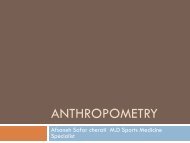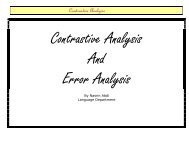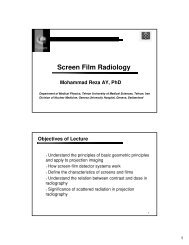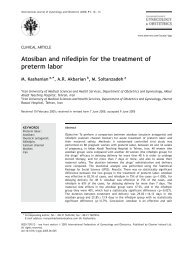A Randomized Clinical Trial Comparing Intralesional Bone Marrow ...
A Randomized Clinical Trial Comparing Intralesional Bone Marrow ...
A Randomized Clinical Trial Comparing Intralesional Bone Marrow ...
Create successful ePaper yourself
Turn your PDF publications into a flip-book with our unique Google optimized e-Paper software.
d T HE J OURNAL OF B ONE &JOINT S URGERY JBJS. ORG<br />
d d VOLUME 90-A N UMBER 4 A PRIL 2008<br />
lower rates of cyst healing after bone marrow injection(s) 10,11 .<br />
The purpose of this study was to compare the rates of healing<br />
of simple bone cysts following intralesional injection of bone<br />
marrow with those following methylprednisolone injection.<br />
Materials and Methods<br />
Design<br />
This study was a multicenter, randomized clinical trial conducted<br />
at twenty-four centers across North America and<br />
India. It was the inaugural trial of the Pediatric Orthopaedic<br />
Society of North America <strong>Clinical</strong> <strong>Trial</strong>s Network.<br />
Study Participants<br />
All children eighteen years of age or younger with a diagnosis<br />
of simple bone cyst were eligible, including those with previous<br />
fracture(s) or previous (failed) treatment but excluding those<br />
with a malignant tumor, bone marrow disease, chronic steroid<br />
use, chemotherapy, contraindications to steroid use, or pregnancy.<br />
This study received ethical approval from the institutional<br />
review board at each study site.<br />
Baseline Information<br />
We obtained data regarding the patients’ age and sex and details<br />
of prior treatment(s) or fracture(s). Patients completed<br />
the Activities Scale for Kids (ASK) 12-15 , a thirty-item scale focusing<br />
on children’s abilities and the functional activities that<br />
they perform. It has an internal reliability of 0.90 (Cronbach<br />
alpha) and a test-retest reliability of 0.97 (intraclass correlation<br />
coefficient) 14 . Construct validity of the ASK has been demonstrated<br />
by a correlation of 0.81 (p < 0.0001) with the parentreported<br />
Childhood Health Assessment Questionnaire (CHAQ)<br />
and a correlation of 0.92 (p < 0.0001) with clinicians’ observations<br />
15 . Patients also completed the Oucher Scale 16 , which is<br />
used to measure pain in children and has a reported test-retest<br />
reliability ranging from 0.54 to 0.72 (correlation coefficients) 16 .<br />
Construct validity was demonstrated by gamma correlation<br />
coefficients ranging from 0.70 to 0.98 in comparisons with the<br />
Poker Chip Tool 17,18 , and convergent validity was found in<br />
comparison with a visual analogue scale 19 . Discriminant validity<br />
ranged from 0.07 to 0.35 when the Oucher Scale was<br />
tested against standard fear measures, the Hospital Fears Rating<br />
Scale 20 and the Scare Scale 21 .<br />
Radiographic assessment of the lesion included determination<br />
of the cyst-healing grade with Cole’s modification of<br />
Neer’s criteria 3 . Grade 1 indicates that the cyst is clearly visible,<br />
grade 2 indicates that the cyst is visible but multilocular and<br />
opaque, grade 3 indicates sclerosis around or within a partially<br />
visible cyst, and grade 4 indicates complete healing with obliteration<br />
of the cyst 1,3,22 . The radiographs were also assessed to<br />
determine cyst activity (the distance from the physis in centimeters)<br />
2 , the cyst area (length by width by depth in cubic<br />
centimeters) based on two orthogonal plain radiographs 23 ,<br />
cyst loculation (present or absent) 23 , location in the lower or<br />
upper extremity 3 , and location within the bone (metaphyseal,<br />
epiphyseal, or diaphyseal). Magnetic resonance imaging was<br />
not routinely performed.<br />
723<br />
C OMPARISON OF I NTRALESIONAL B ONE M ARROW AND S TEROID<br />
I NJECTIONS FOR S IMPLE B ONE C YSTS<br />
Randomization<br />
Randomization was performed after patients were deemed<br />
eligible and had provided informed consent. Patients were randomly<br />
allocated to receive injection of either bone marrow<br />
or steroid (methylprednisolone acetate) in variable (two, three,<br />
or four-patient) random-size blocks stratified by prior fracture(s)<br />
(yes or no) and prior treatment (yes or no). An independent<br />
biostatistician created the randomization schedule<br />
with a computer. Treatment assignments, placed in sequentially<br />
numbered opaque envelopes, were assigned by one of two<br />
trial managers.<br />
Interventions<br />
Technique Common to Steroid and <strong>Bone</strong> <strong>Marrow</strong> Injections<br />
Each patient received a maximum of three injections, with at<br />
least three months between injections. The indication for a<br />
second or third injection was based on the surgeon’s judgment<br />
regarding whether the cyst was healing or not. Patients<br />
with a prior fracture were treated with the injection at least<br />
three weeks after the fracture, and patients with prior treatment<br />
were treated with the injection at least three months<br />
after the previous treatment. Injections were performed with<br />
the patient under general anesthesia. The diagnosis of a<br />
simple bone cyst was confirmed by needle aspiration of clear<br />
or straw-colored fluid 2,23,24 . Contrast medium (50% Hypaque<br />
[diatrizoate meglumine] and 50% sterile saline solution) was<br />
injected to visualize the extent of the cyst. After irrigation with<br />
the contrast solution, a needle (16 gauge for children older<br />
than five years of age and 18 gauge for children five years of age<br />
or younger) was used to break down loculations and scrape the<br />
cyst lining 4,9,10 . If the cyst was multilocular, each cavity was injected<br />
separately 3,10 . Radiographic assessment of venous outflow<br />
was not routinely performed.<br />
Technique Specific to <strong>Bone</strong> <strong>Marrow</strong> Injections<br />
With use of an 11-gauge needle (for patients weighing >75 lb<br />
[>34 kg]) or a 13-gauge needle (for patients weighing £75 lb),<br />
autologous bone marrow was aspirated from the iliac crest and<br />
into a plastic nonheparinized syringe 25-27 . Through a single<br />
skin-puncture site, the surgeon withdrew 2 to 3-mL aliquots of<br />
bone marrow from enough areas within the ilium to obtain 9<br />
to 18 mL of bone marrow, which was then injected into the<br />
cyst 10,25,28,29 .<br />
Technique Specific to Steroid Injections<br />
The total cyst volume was calculated as the maximum length<br />
by width by depth on the anteroposterior and lateral radiographs.<br />
Methylprednisolone acetate, 3 mg/cm 3 of cyst volume<br />
with a maximum dose of 180 mg, was injected into the cyst.<br />
Study Outcomes<br />
Two-Year Outcomes<br />
The primary study outcome was the cyst-healing grade 1,3,22 .<br />
Secondary outcome measures included function (according to<br />
the ASK 15 ), pain (according to the Oucher scale 16 ), number of<br />
injections, subsequent fractures, and complications. The rela-


